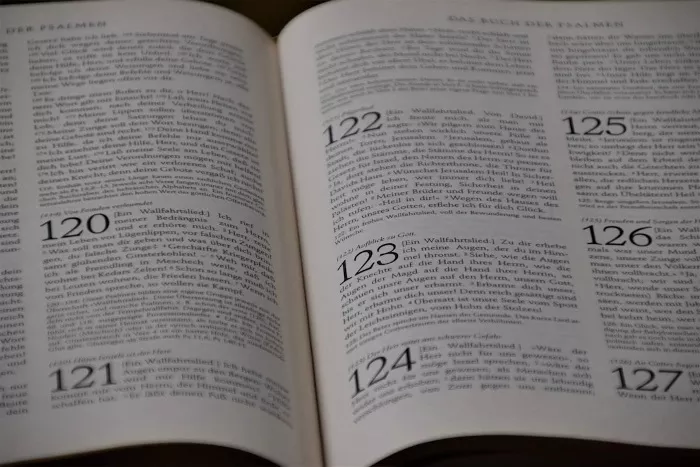The Book of Numbers is the fourth book of the Bible. It is part of the Torah, also known as the Pentateuch. In this book, the Israelites are wandering in the wilderness for 40 years. They face trials, rebellions, and moments of divine intervention. While the name of Jesus is not mentioned directly in Numbers, there are many typological references and foreshadowings that point to Him. Understanding these connections can provide a deeper understanding of who Jesus is in the Book of Numbers and His role in God’s redemptive plan.
Jesus as the Preexistent Son of God
In the New Testament, Jesus is often referred to as the “Word” (John 1:1), existing with God from the beginning. This idea is mirrored in Numbers through the divine presence that guides and protects Israel. The cloud by day and the fire by night that led the Israelites (Numbers 9:15-23) represent God’s presence, which can be seen as a type of Christ. Just as the cloud and fire led the people of Israel, Jesus, the preexistent Word, guides believers today. His presence is constant, just as the cloud and fire were during the Israelites’ journey.
Jesus as the Rock of Salvation
One of the most striking typologies of Jesus in the Book of Numbers is found in the story of the water from the rock. In Numbers 20:7-12, the Israelites were thirsty and complained to Moses. God instructed Moses to speak to a rock, and water would flow out of it. However, Moses, in frustration, struck the rock twice with his staff. Water still flowed, but Moses was reprimanded by God for not following His instructions exactly.
The Apostle Paul connects this rock to Christ in 1 Corinthians 10:4, saying, “For they drank from the spiritual rock that followed them, and the rock was Christ.” The rock symbolizes Christ as the source of living water, offering spiritual sustenance to His people. The striking of the rock can be seen as a foreshadowing of Christ’s suffering and crucifixion, from which life-giving water—symbolizing salvation—flows to all who believe.
Jesus as the Bronze Serpent
Another clear foreshadowing of Jesus in the Book of Numbers is the story of the bronze serpent. In Numbers 21:4-9, the Israelites sinned by complaining against God and Moses. In response, God sent fiery serpents among the people, and many died. The people repented, and God instructed Moses to make a bronze serpent and set it on a pole. Whoever looked at the bronze serpent was healed and lived.
Jesus as the Atoning Sacrifice
In Numbers, various sacrifices are prescribed for the atonement of the people’s sins. These sacrifices include the burnt offering, sin offering, and peace offering (Numbers 15:1-16). While these sacrifices were part of the Old Covenant, they pointed forward to the ultimate sacrifice—Jesus Christ.
The New Testament explains that Jesus is the fulfillment of these sacrificial systems. In Hebrews 10:10, it is written, “And by that will, we have been sanctified through the offering of the body of Jesus Christ once for all.” Jesus is the ultimate atoning sacrifice, fulfilling the requirements of the Law and providing a way for humanity to be reconciled with God.
See Also: How Many Chapters Are in the Book of Numbers?
Jesus as the Intercessor
Moses often acted as an intercessor between God and the Israelites. When the people sinned, Moses would plead with God on their behalf, asking for mercy and forgiveness (Numbers 14:13-19). This role of Moses points to Jesus, who is the ultimate intercessor.
In Hebrews 7:25, it says, “Therefore He is able to save completely those who come to God through Him, because He always lives to intercede for them.” Jesus, like Moses, intercedes on behalf of His people, but He does so perfectly. His intercession is based on His own righteousness and sacrificial death, making it effective for all time.
Jesus as the Promised Land
The Book of Numbers is centered around the journey of the Israelites to the Promised Land, a land flowing with milk and honey. This Promised Land is a type of Christ, who is the ultimate fulfillment of God’s promises. In the New Testament, Jesus is described as the one who brings rest to His people (Matthew 11:28-30). Just as the Israelites were to find rest in the Promised Land, believers find rest in Jesus.
Jesus as the Faithful High Priest
In the Book of Numbers, the role of the high priest is crucial. The high priest was responsible for making atonement for the sins of the people, entering the Holy of Holies on the Day of Atonement to offer sacrifices (Numbers 18:1-7). This role foreshadows Jesus as the Great High Priest.
Conclusion
In the Book of Numbers, Jesus is foreshadowed in many ways. He is the preexistent Son of God, guiding His people through the wilderness. He is the Rock from which living water flows, the Bronze Serpent lifted up for our healing, and the ultimate Atoning Sacrifice. He is the faithful Intercessor, the fulfillment of the Promised Land, and the Great High Priest.

